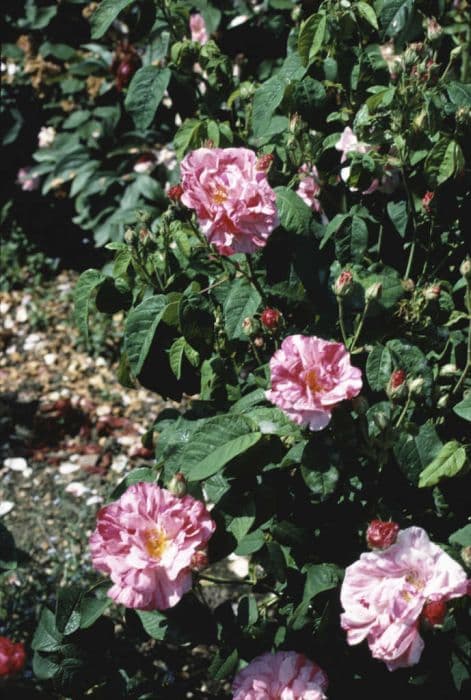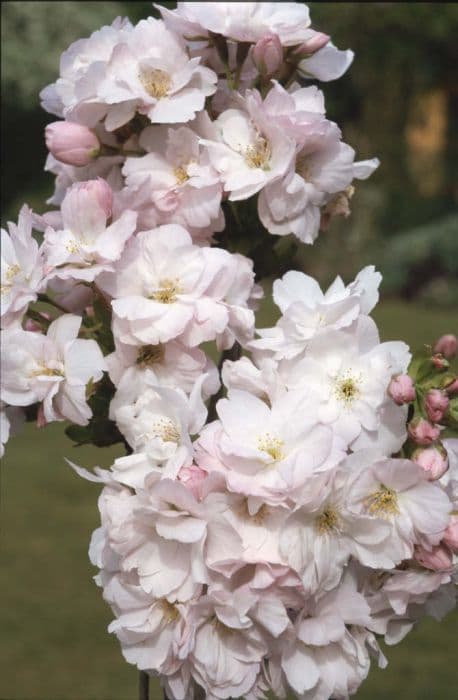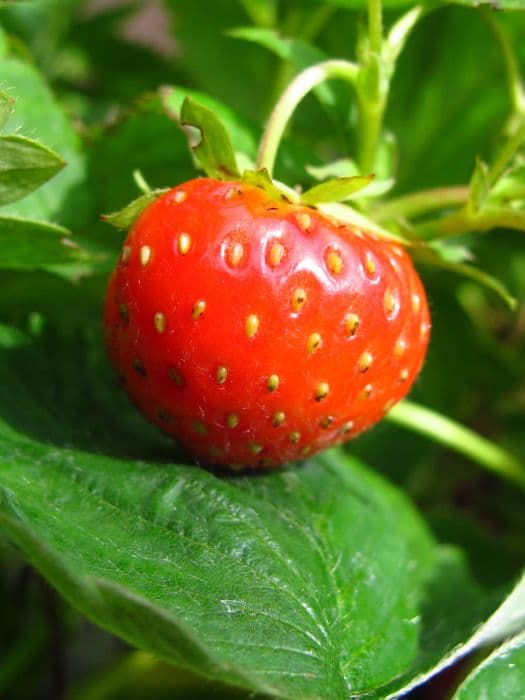Callery pear 'Chanticleer' Pyrus calleryana 'Chanticleer'



ABOUT
Pyrus calleryana 'Chanticleer' is a deciduous tree that typically reaches a height of 20-30 feet. It has a pyramidal shape and a dense, upright habit.
The leaves are glossy green and simple, with a serrated margin. They are oval to lanceolate in shape and 2-4 inches long.
The tree produces small white flowers in the spring before the leaves emerge. They are followed by small, inedible fruit. The bark is smooth and gray.
The tree is most notable for its spectacular fall color, which ranges from orange to purple-red.
About this plant
 Names
NamesFamily
Rosaceae
Synonyms
Callery pear
Common names
Pyrus calleryana 'Chanticleer'
 Toxicity
ToxicityTo humans
Pyrus calleryana 'Chanticleer' is not known to be toxic to humans.
However, it is important to note that all parts of the tree, including the leaves, bark, and fruit, may cause mild stomach upset if ingested in large quantities.To pets
Pyrus calleryana 'Chanticleer' is not known to be toxic to animals.
The tree is not listed as toxic by any reputable sources. However, as with any plant, it is always best to keep a close eye on pets and animals that may be inclined to nibble on foliage.
 Characteristics
CharacteristicsLife cycle
Perennials
Foliage type
Deciduous
Color of leaves
Green; from orange to purple-red in the fall
Flower color
White
Height
Up to 30 feet
Plant type
Tree
Hardiness zones
4
Native area
China, Taiwan, and Vietnam
Benefits
 General Benefits
General BenefitsPyrus calleryana 'Chanticleer' is a beautiful ornamental tree that is grown for its striking foliage, showy flowers, and colorful fruit;
The tree is often used as a street tree due to its tolerance of a wide range of soil conditions and its ability to withstand urban pollution;
Pyrus calleryana 'Chanticleer' is a great tree for fall color, as its leaves turn vibrant shades of red, orange and purple;
Pyrus calleryana 'Chanticleer' is resistant to many of the diseases that affect other pear trees, such as fire blight;
This tree is low maintenance and does not require regular pruning. It is also drought-tolerant once established;
Pyrus calleryana 'Chanticleer' provides food and shelter for wildlife, including birds, mammals, and pollinators;
This tree can filter the air by absorbing pollutants such as nitrogen oxides and sulfur dioxides;
The tree's deep roots help stabilize soil and prevent erosion. Other Uses
Other UsesPyrus calleryana 'Chanticleer' can be trained as a bonsai, which is a miniature tree grown in a small container;
The tree can be propagated through rooting cuttings, which can be used to grow new trees from the parent tree;
The wood of Pyrus calleryana 'Chanticleer' is hard, dense and can be used for firewood, it's also good for carving and construction of small objects;
Due to the tree's height and thick growth habit, it can be planted as a privacy screen to block unwanted views;
Pyrus calleryana 'Chanticleer' is also used as a street tree, as it is tolerant of urban conditions and is resistant to pests and diseases.
 Water
WaterPyrus calleryana 'Chanticleer' is a tree that can tolerate a variety of conditions, but in general, it prefers well-draining soil and moderate to regular watering.
During the growing season, it is generally recommended to water Pyrus calleryana 'Chanticleer' once a week, or more frequently if the soil is dry.
In the fall and winter, when the tree is dormant, it will need less water. You should check the soil moisture regularly and adjust watering as needed. Light
LightFor lighting conditions, Pyrus calleryana 'Chanticleer' prefers full sun to partial shade. It will tolerate a range of light conditions, but it should not be grown in deep shade, as it may not produce as many flowers or fruit.
 Temperature
TemperatureThe best temperature for Pyrus calleryana 'Chanticleer' is between 40°F and 90°F, and it can tolerate temperatures as low as -20°F and as high as 110°F.
While it can tolerate a wide range of temperatures, it is best to keep it in a moderate range to ensure its best growth. Pruning
PruningPyrus calleryana 'Chanticleer' should be pruned in late winter or early spring, before new growth begins. The tree should be pruned to remove any dead, diseased, or damaged wood, as well as any crossing or rubbing branches. The tree should also be pruned to shape it and to maintain its desired size and form. The tree should be pruned every year.
 Soil
SoilPyrus calleryana 'Chanticleer' prefers well-draining, fertile soil with a pH range between 6.0 and 7.0.
The tree should be planted in a location that receives full sun and has good air circulation. Humidity & Misting
Humidity & MistingPyrus calleryana 'Chanticleer' prefers moderate humidity levels, between 40-60%.
 Suitable locations
Suitable locationsIndoor
Not growing
Outdoor
Pyrus calleryana 'Chanticleer' is a hardy tree that can be grown in a wide range of outdoor conditions. It prefers full sun to partial shade and well-drained, fertile soil with a pH range between 6.0 and 7.0.
The tree is adaptable to a variety of climates and can tolerate temperatures as low as -20F. It is also drought-tolerant once established. It's best to keep the soil consistently moist, but not waterlogged, it's also important to provide proper drainage.Hardiness zone
USDA 5 - 11
 Life cycle
Life cycleThe life cycle of Pyrus calleryana 'Chanticleer' begins with seed germination, which typically takes place in late spring or early summer. The young seedlings will grow rapidly, developing a strong root system and a single stem.
In the first year, the tree will be in its vegetative stage, where it will focus on establishing its root system and growing leaves. During this stage, the tree will not produce flowers or fruit.
In the second year, the tree will enter the reproductive stage, where it will begin to produce flowers. The flowers of Pyrus calleryana 'Chanticleer' are small, white, and fragrant, and are typically produced in clusters on the tree's branches.
After the flowers are pollinated, the tree will begin to produce fruit. The fruit of Pyrus calleryana 'Chanticleer' is small, round, and green, and typically ripens to a red color in late summer or early fall.
In the mature stage, the tree will continue to produce flowers and fruit annually. It will also grow larger and stronger, reaching its maximum height and width.
Pruning and proper maintenance will help to keep the tree healthy and productive throughout its life cycle. Propogation
PropogationPropogation time
Winter - summer
By SEEDS:
The best time to propagate Pyrus calleryana 'Chanticleer' from seed is in the late fall or early spring. The seeds should be collected from mature fruit and allowed to dry for a few days before sowing. The seeds should be sown in a well-drained seed compost and covered with a thin layer of soil. The seeds should be kept moist and at a temperature of around 60-70°F. Germination typically takes place within 4-6 weeks.
By HARDWOOD CUTTINGS:
Hardwood cuttings can be taken from Pyrus calleryana 'Chanticleer' in late winter or early spring. Cuttings should be taken from mature wood and should be about 6-8 inches long. The cuttings should be rooted in a well-drained rooting medium, such as perlite or sand. The cuttings should be kept in a warm, well-lit location and should be misted regularly to maintain moisture. Rooting typically takes place within 2-3 months.
By ROOT CUTTINGS:
Root cuttings can be taken from Pyrus calleryana 'Chanticleer' in late winter or early spring. Cuttings should be taken from mature roots and should be about 2-3 inches long. The cuttings should be planted in a well-drained rooting medium, such as perlite or sand. The cuttings should be kept in a warm, well-lit location and should be misted regularly to maintain moisture. Rooting typically takes place within 2-3 months.
 Pests
PestsScale insects, Aphid, Apple maggot, Slugs and snails
 Diseases
DiseasesPowdery mildew, Leaf spot, Rust, Fire blight








